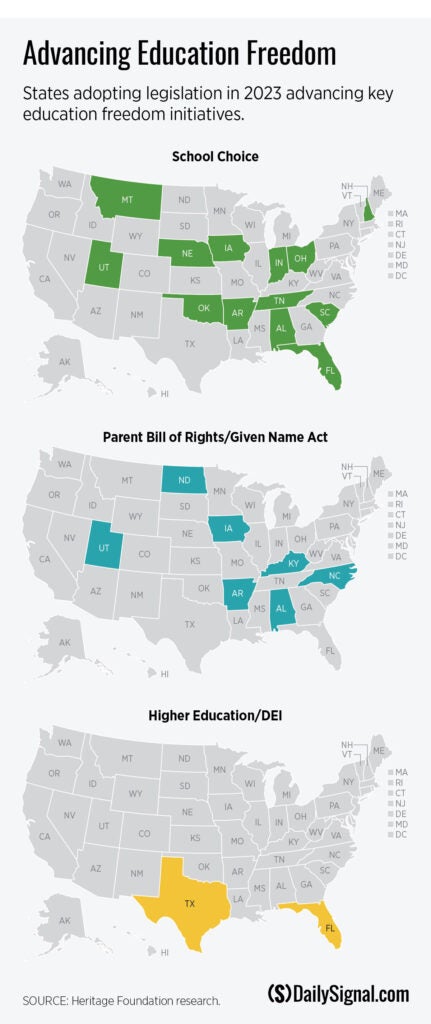Education Around the Country Looks Different This School Year. Here’s What Parents Need to Know.
Jonathan Butcher / Jason Bedrick /
Jennifer Wolverton has a plan for her child’s education: A great laptop, software programs for practicing writing and designing artwork, piano lessons, and art classes.
She is also looking for education therapy sessions for help with ADHD and dysgraphia (difficulty writing by hand).
But that’s just for ninth grade. She has plans for her student’s entire high school career, including community college classes on videography, business management, and graphic design.
Now, though, there are obstacles in the way. “Last year, we spent $3,400 on therapies alone, and we are looking at $10,000 in therapies this year,” Wolverton said in an interview.
She would consider a traditional school, but, she says, “The schools have never ‘pivoted.’” That is to say, they have not updated their services to meet the new needs that students today are bringing to school.
“We need an exit ramp, and an education savings account is an exit ramp,” Wolverton says.
As we explain in our new report, these accounts and similar education choice options are now available to millions of families around the U.S. after state lawmakers made 2023 the “year of education freedom.”
>>>READ THE REPORT: “2023: The Year of Education Freedom”
Officials in four states enacted new universal choice policies (Arkansas, Iowa, Oklahoma, and Utah) and legislators in two other states expanded existing policies to all students (Florida and Ohio), bringing the total number of states with universal choice to eight.
Policymakers in seven states passed new education choice policies and eight states expanded existing education opportunities, such as private school scholarships and education savings accounts.

With a K-12 education savings account, mothers and fathers can use their child’s portion of the state education formula to “unbundle” his or her children’s education.
They can hire personal tutors, purchase textbooks, pay private school tuition, find education therapies, and more—simultaneously, if they choose.
Wolverton’s family lives in Alabama, and she is already taking advantage of homeschool co-op and micro-school options in the state, but, as her plans indicate, she has ambitious expectations through high school and beyond.
To reach their goals, education must be more than a system of “moving a pot of money from this school to that school,” she says. It should be a process of selecting from different products and services and “making it more flexible.”
Mothers and fathers are clamoring for these choices. After Arizona lawmakers expanded student eligibility for the state’s education savings accounts in 2022 to include all children in the state, more than 50,000 new students have enrolled in the accounts. In Ohio, where officials expanded eligibility for private school scholarships this year, more than 66,000 students have applied to participate.
Some 55% of adults say they are dissatisfied with K-12 education today, a figure that has seen a steady increase since 2020. The reasons are many—including that reading and math test scores have fallen to historic lows.
But that’s not all. Surveys find that Americans do not want children taught radical ideas about “gender” in school, nor do they want boys participating on girls sports teams. Polls find that parents do not want their children taught that America is defined by slavery or that their skin color is the most important thing about them.
In 2023, lawmakers addressed these concerns, too.
Lawmakers in seven states adopted either parental bills of rights or provisions that require school officials to inform parents when their student comes to school and wants to be addressed by a name or pronoun that does not match the child’s birth certificate, or both. The latter policy, called the Given Name Act, is an effective measure that calls on educators to work with mothers and fathers and secures parents’ roles as their child’s primary caregivers.
Alabama lawmakers expanded the state’s existing private school scholarship option for K-12 families, but Wolverton and other parents like her are watching what legislators are doing in states nearby.
The broad eligibility for education options in states such as Florida and Oklahoma and the versatility of the education savings accounts and account-style options in Arkansas and Iowa “would be life-changing” for her family and those like hers, she said.
“We love unbundled education in our house,” Wolverton said.
State lawmakers made this school year one of new, creative opportunities for millions of families around the U.S. Millions more are waiting—and ready—for education freedom to come to their states.
Have an opinion about this article? To sound off, please email letters@DailySignal.com, and we’ll consider publishing your edited remarks in our regular “We Hear You” feature. Remember to include the URL or headline of the article plus your name and town and/or state.
